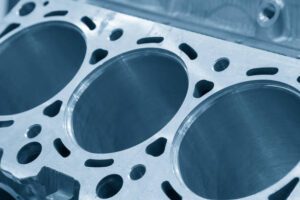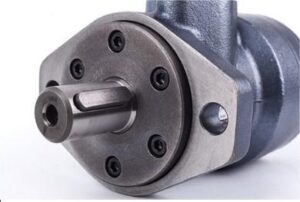Marine fiberglass grating, as a part of marine bar grating, is a vital component in various marine applications. Its lightweight yet robust construction makes it ideal for decks, walkways, platforms, and stair treads. With different types available, such as molded, pultruded, and mini-mesh, it caters to specific needs, ensuring reliable performance in challenging marine environments. Whether it’s providing slip resistance, fire resistance, or accessibility compliance, marine fiberglass grating is a trusted solution for enduring marine conditions.
The Different Type Of Marine Fiberglass Grating
Marine fiberglass grating encompasses various types that are tailored to meet the diverse demands of marine applications. One prevalent type is molded fiberglass grating, which is produced by combining fiberglass strands with a resin matrix and subsequently molded into panels. This versatile grating variety is available in different mesh sizes, panel thicknesses, and resin formulations, rendering it suitable for an array of marine structures. Molded grating, cherished for its corrosion resistance, high strength-to-weight ratio, and durability, finds extensive use in walkways, decks, platforms, stair treads, and safety barriers.
Another commonly utilized type is pultruded fiberglass grating, which undergoes a distinct manufacturing process. This involves pulling fiberglass rovings and resin through a heated die, resulting in continuous profiles. Pultruded grating exhibits exceptional strength and stiffness, making it ideal for applications that entail heavy loads or longer spans. Its inherent resistance to corrosion, along with its superior fire resistance and UV resistance, further enhance its suitability for marine environments.
Mini-mesh grating stands out for its smaller mesh openings, rendering it particularly effective in areas where slip resistance is of paramount importance. By preventing the passage of small objects and offering enhanced slip resistance, this type of grating ensures safety on walkways, stair treads, and offshore platforms.
Covered grating encompasses both molded and pultruded grating panels that are augmented with a top layer of solid fiberglass or a non-slip surface. This added covering provides supplementary protection against corrosion, enhances aesthetics, and improves slip resistance. Covered grating is often preferred in applications that require resistance to chemical exposure or a specific appearance.
In specialized scenarios where fire safety is critical, phenolic grating emerges as a notable choice. This type of grating employs phenolic resin, bestowing it with exceptional fire resistance and low smoke emission properties. Offshore platforms, oil rigs, and other marine applications where fire safety is paramount commonly employ phenolic grating.
For applications that necessitate compliance with accessibility standards, ADA-compliant grating is the preferred option. With its specially designed surface, this grating type offers enhanced slip resistance and facilitates wheelchair access. Public areas, ramps, and accessible walkways benefit from the use of ADA-compliant grating.
The Different Uses Of Marine Fiberglass Grating
Marine fiberglass grating comes in various types, each designed for specific applications and requirements. Here’s a description of where each type is commonly used:
Molded fiberglass grating is widely used in marine environments for applications such as decking on boats and ships, walkways, platforms, and stair treads. It provides a durable and corrosion-resistant surface that is suitable for high-traffic areas.When it used as a fiberglass deck grating, it shows the excellent performance and provides several benefits for marine deck, such as versatility and UV resistance.
Pultruded fiberglass grating is commonly found in heavy-duty structural applications in marine settings. It is used for bridges, docks, piers, and industrial flooring where high strength and load-bearing capacity are required.
Mini-mesh grating is often used in areas where slip resistance is crucial. It is commonly found on offshore platforms, oil rigs, walkways, and other locations where enhanced slip resistance and small object containment are necessary.
Covered grating is utilized in various marine applications that require additional protection and aesthetic appeal. It is often used in pedestrian areas such as decks, boardwalks, and public walkways, as well as in chemical processing plants where resistance to chemical exposure is important.
Phenolic grating is specifically chosen for marine applications where fire safety is critical. It is commonly used on offshore platforms, oil rigs, and other locations where exceptional fire resistance and low smoke emission properties are needed.
ADA-compliant grating is designed to meet accessibility standards and is commonly used in public areas, including parks, docks, and recreational facilities. It provides slip resistance and facilitates wheelchair access.
The Advantage Of Using Fiberglass Grating

Fiberglass bar grating offers several advantages for marine applications:
Corrosion Resistance: The grating, especially the molded fiberglass grating is highly resistant to corrosion, making it suitable for use in harsh marine environments where exposure to saltwater and moisture is common. It does not rust or deteriorate like traditional metal gratings.
Lightweight: The product is lightweight compared to traditional materials like steel or aluminum. This characteristic makes it easier to handle, transport, and install, reducing labor and equipment costs.
High Strength-to-Weight Ratio: Despite its lightweight nature, the grating has a high strength-to-weight ratio, providing excellent load-bearing capacity. It can withstand heavy foot traffic, equipment loads, and dynamic loads without compromising its structural integrity.
Slip Resistance: The open grid design of fiberglass deck grating allows water, oil, and other liquids to pass through, reducing the risk of slipping and enhancing safety on decks.
Low Maintenance: This marine grating requires minimal maintenance compared to traditional materials. It is resistant to mold, mildew, and rot and does not require painting or coating. Regular cleaning with water and mild detergents is usually sufficient.
Electrical Insulation: the grating is non-conductive and provides electrical insulation. It is an important consideration in marine applications where electrical safety is crucial.
Design Flexibility: Fiberglass bar grating is available in various sizes, colors, and surface textures, allowing for customization and design flexibility. It can be tailored to meet specific aesthetic and functional requirements.
How To Choose The Grating For Marine Applications?
When selecting a marine fiberglass bar grating, consider the following factors:
Material Type: Determine the specific type of grating that suits your marine application. Common options include molded grating, pultruded grating, or mini-mesh grating. Each type has its own characteristics and strengths, so choose one that aligns with your requirements.
Load-Bearing Capacity: Assess the anticipated load requirements of your marine application. Select a grating like pultruded fiberglass grating which with suitable load-bearing capacity to safely support the expected loads, including foot traffic, equipment, and dynamic loads.
Open Area Percentage: Evaluate the open area percentage of the fiberglass deck grating. A higher open area allows for better drainage and debris clearance, reducing the chances of water pooling or blockage on the deck surface.
Regulations and Compliance: Ensure that the chosen grating complies with relevant marine industry regulations and standards, such as ADA (Americans with Disabilities Act) accessibility requirements, if applicable to your project.
Customization Options: Determine if the grating can be customized to fit your specific deck layout and configuration. Look for options in terms of sizes, shapes, colors, and surface textures to meet your design and functional requirements.
The Maintenance Of The Bar Grating
The maintenance of marine fiberglass grating is relatively simple and requires minimal effort. Here are some general guidelines:
Regular Cleaning: Clean the grating periodically using water and a mild detergent. This helps remove dirt, debris, and any potential buildup that may affect the grating’s performance or aesthetics. Avoid using abrasive cleaners or harsh chemicals that could damage the surface.
Check Fasteners and Connections: Inspect the fasteners and connections regularly to ensure they are secure and in good condition. Tighten or replace any loose or damaged fasteners promptly to maintain the stability and safety of the grating.
Address Corrosion or Staining: Although fiberglass bar grating is highly corrosion-resistant, in some cases, staining or corrosion may occur due to prolonged exposure to harsh substances or chemicals. If you notice any discoloration or corrosion, consult the manufacturer’s guidelines for appropriate cleaning methods or seek professional assistance if needed.
Prevent Debris Accumulation: Keep the grating clear of debris, leaves, or other objects that may accumulate on the surface. Regularly sweep or use air blowers to remove debris, ensuring proper drainage and preventing potential slip hazards.
Conclusion
In conclusion, having knowledge about marine fiberglass grating is beneficial for understanding its advantages, applications, and maintenance requirements. The grating offers corrosion resistance, high strength-to-weight ratio, slip resistance, and low maintenance needs, making it an excellent choice for marine environments.
If you have any questions about buying fiberglass grating, welcome to Gosea Marine, we can solve all problems and give you the best buying experience.






